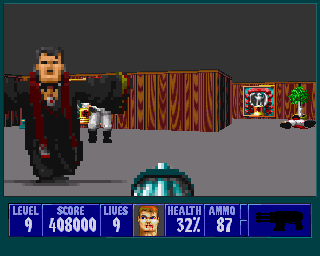
Games have been unable to tackle subject matter like Nazism since the controversial Wolfenstein 3D in 1992 That's what the regulation has been referring to for years and years. "The reason was because of Wolfenstein 3D," says Falk. Indeed, it is a struggle that started - neatly enough - with the release of the very first Wolfenstein game in 1992. This was quite a big debate in the newspapers and magazines when Wolfenstein II: The New Colossus came out, and they changed the whole story around."įalk is one of many people who have fought for games to be regarded as equal to film and literature when it comes to being part of the "social discourse" around that chapter of German history. Nazi flags, the Hitler salute or the depiction of Hitler wasn't allowed. "It's a number of symbols and contents from that Nazi era, which are used in films or books - like Schindler's List, or other stories like The Diary of Anne Frank - but the same symbols would not be allowed in games. "It's not just swastikas," says Felix Falk, managing director of Game, an organisation that represents the German games industry. Nazi flags, the Hitler salute or the depiction of Hitler wasn't allowed" In Germany, video games are able to depict many things, but they can't depict the events, icons or symbols of that part of history. Unless, of course, you purchased Wolfenstein II in Germany, in which case this brilliant sequence would have played out very differently: no Hitler, no swastikas, no anti-semitic paranoia.


It is a pitch dark and scabrously funny piece of satire, and the best moment in one of the best games of 2017. The film's producer is a diseased, senile Adolf Hitler. It is a ruse, of course, part of a dangerous plan to infiltrate a Nazi military base. Blazkowicz must pose as an actor to audition for a film. There is a sequence towards the end of MachineGames' Wolfenstein II: The New Colossus, in which B.J.


 0 kommentar(er)
0 kommentar(er)
